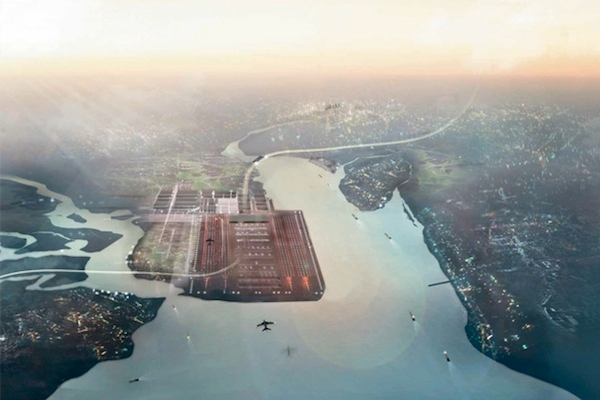Hugh Robertson was trying to stick up for the Prime Minister this afternoon when he said David Cameron was ‘absolutely a man’. He was defending the government’s decision to stay right where it is on airport expansion, against Tim Yeo’s warning that to stick to manifesto pledges and commitments in the coalition agreement on Heathrow would make Cameron a ‘mouse’. So where does this leave the various options to solve our aviation capacity conundrum? Here is a rundown of the various solutions, and who supports them:
Heathrow expansion
Nine years ago, Labour presented a white paper proposing a third runway at the country’s busiest airport, to be built by 2015-2020. In 2009, the party reconfirmed its support for the runway as well as a sixth terminal. A strong local campaign was fought on environmental grounds, which resulted in the coalition agreement ruling out any expansion in this parliament.
Feelings remain strong on both sides. Two notable Conservatives — transport secretary Justine Greening and Zac Goldsmith — have now made threats over this: Greening today said it would be ‘difficult’ to remain in the Cabinet if the government U-turned on Heathrow, while Goldsmith says he will not fight the next election as a Conservative if a third runway is built. But David Cameron and George Osborne may have softened their positions and other MPs — including Free Enterprise Group member Kwasi Kwarteng and housing minister Grant Shapps — have explicitly called for a third runway. In the opposite corner, Bernard Jenkin and Nick de Bois disagreed with a change of policy, arguing that the government needs to pursue a long-term strategy.
Labour’s line on this remains unclear, while the Lib Dems remain vehemently opposed. Nick Clegg confirmed this today, saying ‘we said very clearly as both parties that we wouldn’t do so, so we’re going to stick to the Coalition Agreement’.
Thames Estuary airport
The most outlandish, expensive but potentially most viable long-term solution. Colloquially known as ‘Boris Island’, the idea has been knocking around since the 1950s but has been consistently knocked back over cost concerns. The current proposals are for a four-runway airport in Kent, with high-speed rail links to the rest of the UK, capable of coping with 150 million passengers a year.
The Estuary airport has garnered high profile support from Boris Johnson and Lord Foster, who has drawn up these exotic proposals. George Osborne has recently warmed to the idea but is yet to fully endorse the project. The main issue remains the cost — the project would be in the region of £50 billion. Plus, a new airport would require Heathrow to be shut down entirely to be financially viable, which would have a huge impact for residents on both sides of the capital.
The Lib Dems remain strongly opposed, with Julian Huppert describing the idea are ‘bonkers’. Labour also opposes the plans — London Mayoral candidate Ken Livingstone said the airport would result in a ‘huge increase in noise, congestion and pollution for millions of people’.
Expand another airport in the southeast
A second runway at Stansted was advocated in a Labour white paper in 2003 and has support from Boris Johnson as a ‘stop-gap solution’. Gatwick has also been considered for a second runway but planning rules mean this cannot be built until 2019. The Chancellor signalled in the autumn statement he is willing to consider both options, but the Lib Dems are officially opposed any additional runways at airports in the southeast. However, Isabel reported a few weeks ago that senior figures in the Lib Dems may be softening on a second runway at Stansted.
Regional airport expansion
This is the Lib Dems’ preferred solution, and it rests on a concoction of expanding airports around the country and improving the transport links to connect them together. They claim this ‘hub’ strategy would have ‘minimal impact on the local environment and maximum hubbing potential’ but would incur significant costs to connect the hubs together compared to expanding one location.
Do nothing
The current lack of direction will continue to hamper growth, even if High Speed 2 does come to fruition. This will lead to further pressure from business leaders and more worried Conservative MPs. How to answer these demands will be a key battleground for the 2015 election, if not before.






Comments